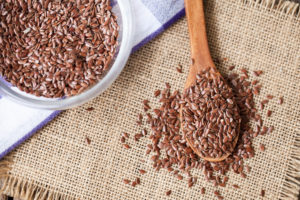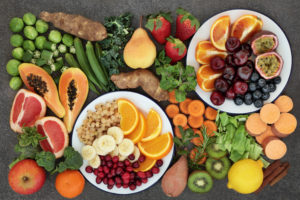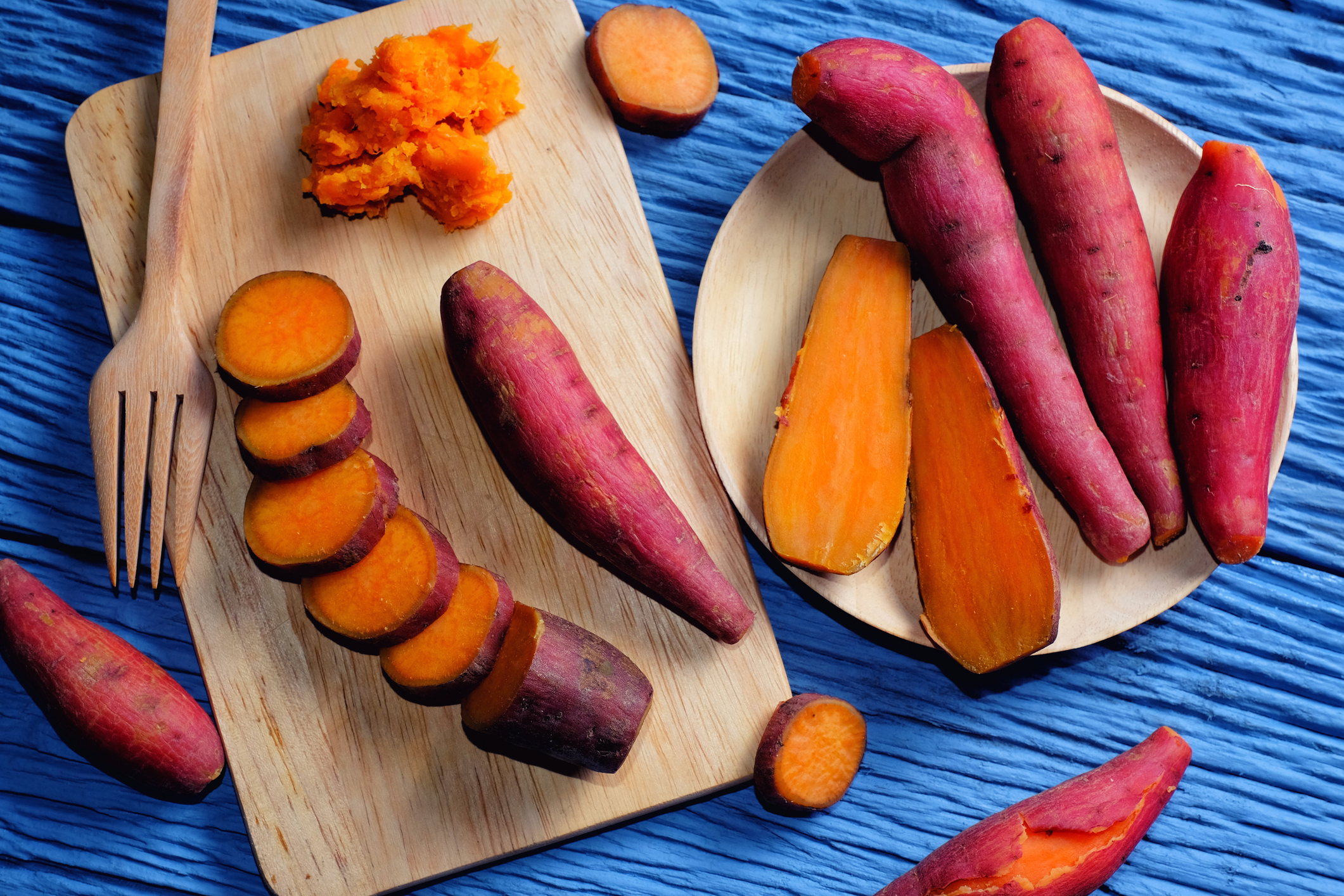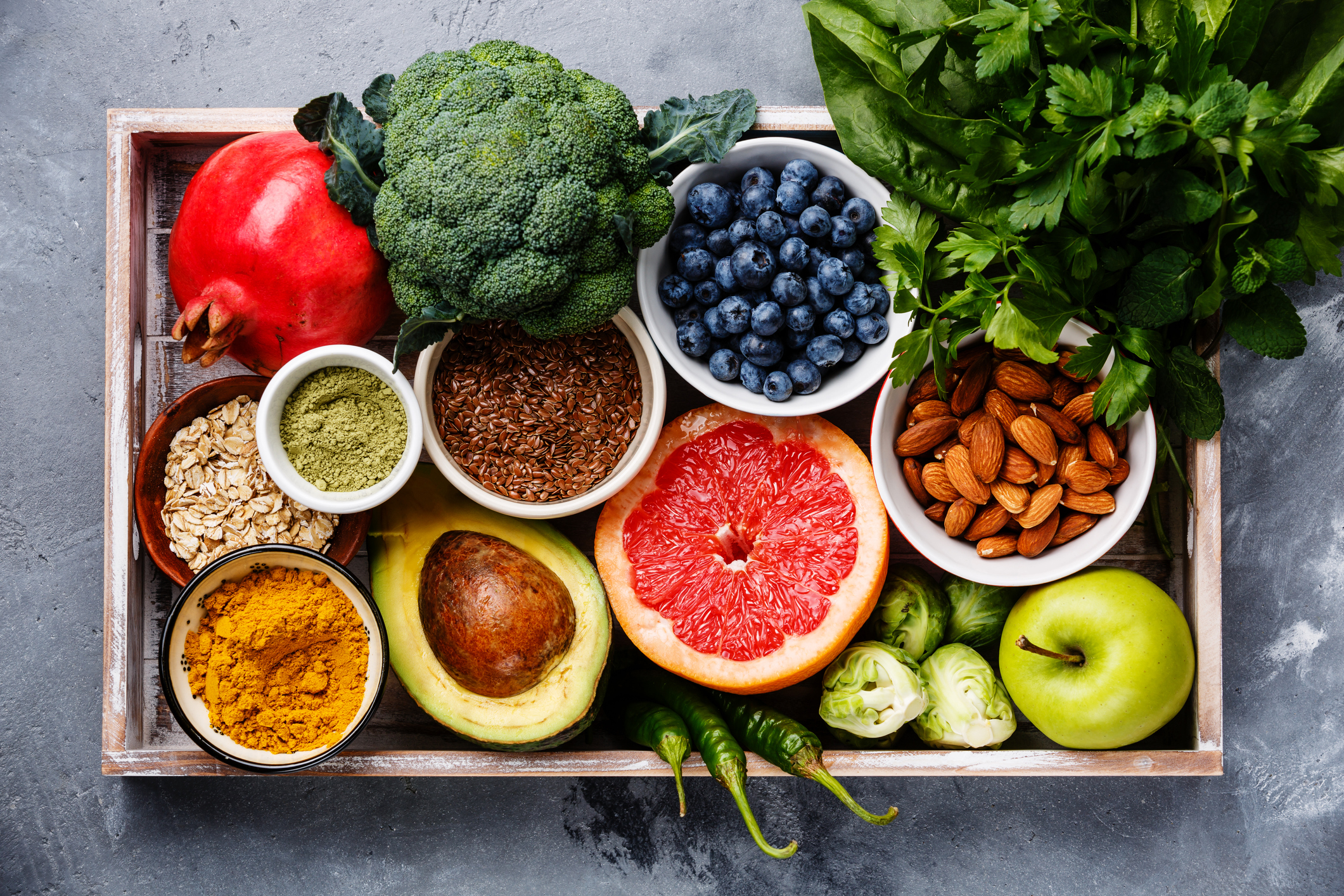When you think about the benefits of fiber, is constipation relief the first thing that comes to mind?
Sure, dietary fiber can be a big help to get things moving, but its importance goes way beyond digestive motility.
Fiber is actually great for whole-body health, and it’s crucial to get enough in your diet.
Dietary fiber has a huge impact on your microbiome, your sense of satiety, and colon cancer risk. It also impacts blood sugar regulation, helps keep your hormones balanced, and can play an important role in managing diabetes and metabolic syndrome, among other conditions.
When we eat naturally high fiber foods, we get a lot more than just fiber. The fiber found in whole foods like fruit and veggies is usually packaged along with a ton of important micronutrients and antioxidants.
With all of these benefits, its no wonder that most nutrition experts recommend a diet higher in fiber.
Wondering what the benefits of fiber might be beyond helping you poop? Curious if you could benefit from a little more fiber in your life?
Read on for more about why fiber should be an important part of your diet, and how much you should aim for on the regular.

THE BASICS OF FIBER
Dietary fiber is sometimes referred to as “roughage” and refers to nutrients that our digestive tract can’t digest and absorb.
Fiber is present in almost all plant foods, and getting adequate fiber is a major reason why I prefer my clients eat whole food sources of carbohydrates as much as possible.
Fiber is typically categorized as soluble fiber and insoluble fiber. There are important differences between these two fibers and how they benefit our health.
Soluble Fiber
Soluble fiber absorbs water to form a viscous gel. This not only helps with smooth elimination, but the gel-like consistency of soluble fiber can trap macronutrients like carbohydrates for slower absorption and better blood sugar control.
Soluble fiber also attracts and binds to cholesterol for excretion, and can be an effective dietary tool for lowering serum cholesterol, along with other excess cholesterol-derived hormones like estrogen and testosterone.
Types of soluble fibers include pectins, gums, inulin-type fructans and some hemicelluloses. Some sources of these types of soluble fiber include oatmeal, apples and blueberries, pears, nuts, beans, peas, citrus, carrots, barley, and psyllium.
For more on the benefits of fiber in fruit, check out this blog post!
Insoluble Fiber
In contrast, insoluble fiber doesn’t absorb water and is usually tougher and more, well…fibrous!
Think about the difference between cooked oatmeal and raw celery. The cellulose in celery is what gives it such a crunchy texture, and it’s also where the fiber comes from.
Insoluble fiber takes up a lot of room in the digestive tract. This helps you feel satisfied after a fiber-rich meal, and can even impact weight management by displacing other less-filling, calorie dense foods. It also adds bulk to stools, which can help with elimination.
Sources of insoluble fiber include the seeds and skins of fruits, whole grains, nuts, beans, and vegetables like cauliflower, green beans, potatoes, and sweet potatoes.
Curious if you should eat beans and legumes? Check out this helpful blog post to find out why beans are a healthy food for most people.

How dietary FIBER WORKS in our gut
Humans don’t have the enzyme required to break down fiber, and because of this we can’t fully digest the tough parts of plants.
Usually, our bodies can break down macronutrients into smaller components in the small intestine. Carbs are broken down into monosaccharides, protein is broken down into amino acids, and fat is broken down into fatty acids.
Fiber is different. Instead, it passes undigested through to the colon, where it’s fermented by the bacteria living there.
It’s mostly soluble fibers that are fermentable, but there are also some insoluble fibers that can be fermented by bacteria too.
Because we don’t have that enzyme to digest fiber, our gut bugs do it for us! Those beneficial bacteria that make up our microbiome uses fiber as fuel to produce short-chain fatty acids (SCFAs).
Short-chain fatty acids have important metabolic benefits, including reduction in colon cancer precursors, and regulation of macronutrient metabolism and hormone secretion.
In a study involving rat models, high-fiber supplementation increased the production of SCFA-producing bacteria, supported SCFA-related functional pathways, and raised levels of beneficial SCFA metabolites. All of this was associated with a decreased tumor load in the rat models at risk for colorectal cancer.

WHAT ABOUT RESISTANT STARCH?
Resistant starch is technically defined as any starch not digested in the small intestine. Seems simple, right?
Resistant starch is similar to fiber in that it bypasses the small intestine to be fermented by colonic bacteria in the large intestine. However, starch and fiber are two different compounds.
Both starch and fiber are carbohydrates, but starch is considered a simple carb while fiber is a complex carb.
Starch is a long-chain polysaccharide linked by “alpha” bonds. We have the enzyme required to break these alpha bonds, which means we can digest starch.
In contrast, fiber is a long-chain polysaccharide linked by “beta” bonds. We don’t have the enzyme necessary to break these bonds, which means no fiber digestion for us.
Resistant starch forms in such a way that it mimics the properties of fiber. So while starch breaks down into glucose and is digested like any other carbohydrate, resistant starch serves as a fuel source for colonic bacteria after passing through the human digestive tract.
It’s important to include sources of resistant starch – and fiber! – into your diet because it’s a great way to feed the good bacteria in your gut.
You’ve heard of pro-biotics? Resistant starch is considered a pre-biotic. It helps support and fuel a healthy microbiome.
Not to mention resistant starch can help lower blood glucose and improve insulin sensitivity, assist in weight loss, and reduce inflammation.

8 important benefits OF DIETARY FIBER
The Institute of Medicine recommends women under the age of 50 consume 25 grams per day of fiber.
Sound easy enough? Depends on what you’re eating. In fact, the average American eats only 16 grams of fiber per day, and that’s with a barrage of fiber-added processed foods like cereals and granola bars on grocery store shelves.
If that’s not enough to make you want to amp up your fiber intake, compare that paltry 16 grams to the roughly 100 grams of fiber consumed by the healthy hunter-gatherer Hadza people of Tanzania.
The amount and type of fiber you eat matters, and not just in relation to your gut microbiome. It’s a good idea to try to get at least 25 grams in your daily diet, primarily from fruits and veggies, but also from properly prepared grains and legumes too.
Here are 8 good reasons to make sure you’re eating fiber-rich foods on a daily basis.
DIGESTION & GUT HEALTH
Fiber facilitates the passage of stools, which helps limit the amount of time that waste products are in contact with the intestinal lining. This has a marked effect on decreasing the risk of colorectal cancer.
Fiber also makes bowel movements easier and more regular. If you’ve ever experienced constipation you know that this isn’t something to take for granted.
We’ve already discussed the benefits of short-chain fatty acid production, and this key mechanism occurs in the gut. These short chain fats help feed and strengthen the gut lining and prevent “leaky gut” from happening.
Hormone balance
Increasing your fiber intake may be helpful for reducing excess estrogen or testosterone, which is common in conditions like PCOS or estrogen dominance.
Excess cholesterol-based hormones like estrogen and testosterone are secreted with the bile produced by the liver, which can then be bound to soluble fiber in the gut and excreted in the stool. By excreting these hormones effectively, you’re not reabsorbing them into your blood for recirculation.
DETOXIFICATION
Fiber can bind to and trap carcinogens for excretion. It also binds to toxins called “lipopolysaccharides” or “LPS” produced by harmful bacteria that typically cause inflammation in our guts. Excreting these toxins makes our guts a whole lot healthier, along with the rest of our bodies.
Would you like to save this post?
Your email address is 100% safe and will never be sent spam.
But this mechanism isn’t limited to harmful waste products. As I mentioned, dietary fiber can also help with the removal of excess hormones, like estrogen or cholesterol.
Overall a higher fiber diet can support our body’s ability to detoxify and eliminate toxins through the stool. No need for any crazy juice fasts or “detox teas” when you’re eating a high fiber, whole foods diet!
BLOOD SUGAR
Diabetes risk is related to the type of carbohydrate consumed, along with the glycemic load and the individual’s response to carbs. Fiber slows digestion and absorption to mitigate blood sugar response to a carb-containing meal.
In contrast, eating regular high-carb meals that are also low in fiber could increase risk for diabetes.
In a study examining the effects of soluble fiber supplements on newly diagnosed T2DM patients, regular additions of psyllium to the diet improved metabolic syndrome markers. This resulted in reduced blood pressure, improved fasting blood sugar, and improved cholesterol markers.
If you’re concerned about developing diabetes, don’t cut carbs entirely. Rather, stick to the high fiber, plant-based carbs that are good for healthy blood sugar control.
SATIETY & WEIGHT MANAGEMENT
Foods high in fiber can be beneficial in a healthy weight loss plan.
Soluble fiber leads to the production of glucagon-like peptide (GLP-1) and peptide YY (P-YY) which are compounds involved in sending signals of satiety to the brain.
Additionally, high fiber foods are bulkier than their low-fiber counterparts, helping someone on a weight loss plan feel fuller, faster.
According to a study on dietary fiber and satiety, women are more sensitive than men to intestinal-phase signals of satiety, which makes fiber a promising player in any anti-obesity or weight management nutrition protocols involving females.
Rather than solely focusing on cutting calories to lose weight, focusing on increasing fiber-rich fruits and veggies as a bigger component of your meals will improve satiety and reduce overall caloric density. This can help you with weight loss if that’s something your body would benefit from. (No starvation diets required!)
CANCER prevention
While we don’t know how to 100% prevent cancer yet, it’s likely that a higher fiber diet is a good place to start. Fiber shortens transit time in the gastrointestinal tract to reduce contact between waste products and the colon, plus the added bulk in stools lowers the concentrations of harmful substances.
In addition to these protective effects against colorectal cancer, fiber is also linked to preventative effects against endometrial and breast cancers. This may have something to do with the way fiber clears out excess estrogen as well as estrogen-like environmental toxins.
Increased fiber intake is also associated with greater microbiome diversity and an increase in the production of beneficial anti-carcinogenic SCFAs.
An ongoing study examining the effects of dietary fiber on microbiome composition and risk for antibiotic-resistant infections posits that regular intake of fiber-containing foods supports the microbiome. Beneficial bacteria in the gut produce signaling molecules and impact immunity, which may help fight off invading pathogens.
Most experts agree that a diet containing a wide variety of fiber rich plant foods is a smart choice when looking to reduce the risk of cancer.
CARDIOVASCULAR HEALTH
According to a study listed in a review of the effects of dietary fiber on metabolic health, for every 10 grams of fiber added to the diet, the mortality risk for coronary heart disease decreases by 17-35%.
Foods naturally high in fiber are usually whole and unprocessed. They’re low in sugar, and rich in vitamins, minerals, and antioxidants – all factors that fight inflammation that may lead to heart disease.
Plus, those short-chain fatty acids we’ve been talking about? They reduce the risk of cardiovascular disease, among other disorders.
While there’s likely an upper limit of fiber intake where this benefit drops off, it definitely supports the recommendation of aiming for at least 25 grams of fiber per day.
AGING
Analysis of the NHANES Study of Biologic Aging showed a significant linear relationship between fiber consumption and telomere length.
Telomeres are parts of chromosomes that play a role in cell division. With every cycle of cell division, telomeres shorten. Like the rings on a tree, telomeres are a way to track and measure the age and deterioration of cells.
The analysis concluded that an increase of 10 grams of fiber per 1000 kcals is associated with longer telomeres, which equated to nearly 5 fewer years of biologic aging.
Who needs plastic surgery when you can simply get lots of fiber-rich plant foods in your diet?

How to get more fiber in your diet
Fruits and Vegetables
No matter what dietary philosophy you subscribe to, fruits and vegetables are the best “real food” way to increase your soluble and insoluble fiber intake.
Because there are so many benefits of fiber in the diet, I think it’s silly to eat a diet that is low in fiber and call it healthy. Even if you’re doing a lower carb diet, there’s no reason you can’t also get plenty of fiber.
Citrus fruits like oranges and grapefruit have some of the highest levels of soluble fiber, along with berries, apples, apricots, dates, prunes, mango, and pears.
Starchy vegetables like sweet potatoes, white potatoes, carrots, turnips, and other root vegetables are also high in soluble fiber.
Non-starchy vegetables with a high amount of soluble fiber include asparagus, brussels sprouts, squash, zucchini, and broccoli. If you eat legumes or peas, lentils, chickpeas, and pinto beans also have a high amount of soluble fiber.
Aim for about 25-35 grams per day of soluble and insoluble fiber as tolerated. (Note: if you have a significant digestive condition, you may need to eat less fiber while you’re treating the gut issue.)
Soluble Fiber Supplements
Supplemental soluble fiber like oat bran, flaxseeds, psyllium husks, and methylcellulose are commonly used as easy ways to greatly increase fiber intake.
But overdoing fiber supplementation can cause gas or stomach cramping, and can also bind to nutrients and prevent absorption of vitamins or minerals in your food, including iron, zinc, calcium, and magnesium.
I would suggest that fiber supplements be a last resort, and that you should try to get your fiber from plant foods in your diet.
If you want to try using soluble fiber supplements, make sure you start slow and choose supplements that are gluten-free. I also recommend taking them first thing in the morning and on an empty stomach, so you’re not binding up nutrients from your food.
Fiber supplements can also affect the action of certain medications, so check with your doctor if you’re taking any prescription drugs. If you plan to take any of these fiber supplements, it’s crucial that you significantly increase your fluid intake, since these high-fiber containing supplements absorb a great deal of water in your gut.
Truthfully, I don’t think most people need to use fiber supplements. There are many delicious, healthy foods that can provide adequate fiber intake without needing to supplement.

FOR MORE FIBER, you need CARBS
The benefits of fiber are pretty incredible, including increasing stool bulk, decreasing transit time, managing cholesterol and blood sugar, trapping harmful substances for removal, and feeding the good bacteria in our gut.
But it’s hard to get all the fiber we need without eating adequate carbohydrates.
Almost all fiber-containing foods are also sources of carbohydrate. A few, like flaxseeds or psyllium, manage to pass along fiber in a low-carb package. But a woman cannot live on flaxseeds alone.
It’s important to get a wide variety of fiber types from a wide variety of sources in your diet for optimal health.
So don’t discount the carbs! They can be a huge help in increasing your fiber intake to a healthy level.
There’s a lot more to fiber than you might have realized. Were you surprised by any of the benefits of fiber? Do you notice any health benefits when eating a higher fiber diet? Let me know in the comments below!
A Note for Our Readers
I no longer offer 1:1 nutrition or functional health services, and I’m not accepting new clients for digestive or hormone-related support. This blog remains published as a helpful resource for women navigating these health challenges — especially those looking for clarity around their symptoms and well-being.
Today, my work is dedicated to helping Health Coaches, Practitioners, and Wellness Entrepreneurs grow profitable, sustainable businesses through private practice coaching and mentorship.
If you’re a wellness professional who’s ready to grow a thriving, values-aligned business without burning out, click here to learn more about my coaching programs.
And if you’re ready to build the kind of online health business that nourishes you financially, emotionally, and energetically, check out my signature program, the Nourished Business Accelerator™.
Thank you for being here and I wish you the best on your journey.
This post may contain affiliate links. If you click on a link and make a purchase, I may receive a small commission.

+ show Comments
- Hide Comments
add a comment